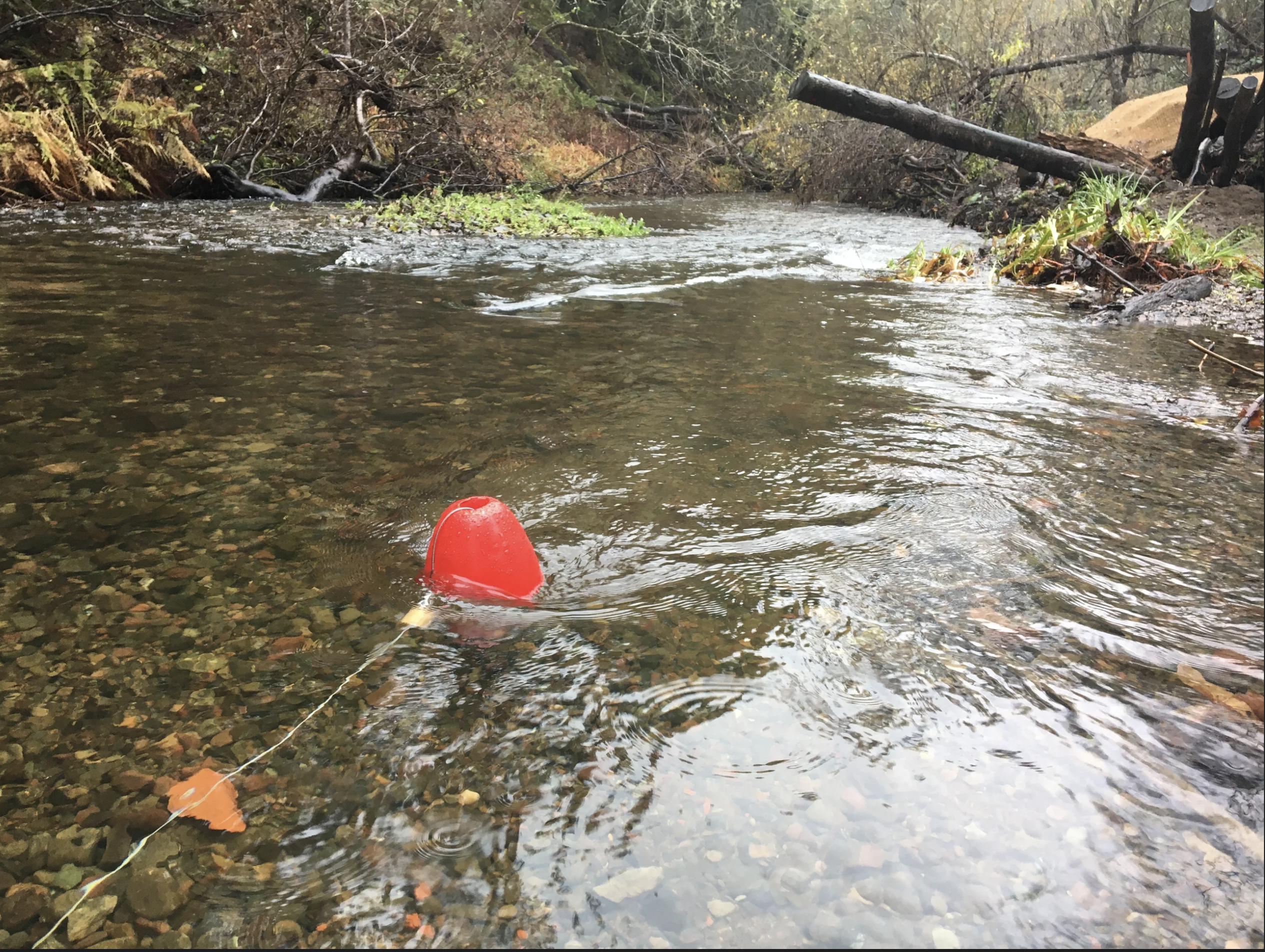By Bryce King, Habitat Restoration Intern

SPAWN is conducting substrate classification, embeddedness, and scour chain studies to gauge the current redd habitat value for salmonids in Lagunitas Creek.
The Salmon Protection And Watershed Network, or SPAWN, is conducting substrate classification, embeddedness, and scour chain studies to gauge the current redd habitat value for salmonids. The project methods are repeatable so that data collected can be compared over multiple years to better inform restoration practices along Lagunitas Creek.
Salmonids prefer to spawn (lay eggs) along riffle crests where the stream bed is made up of golf ball to fist-sized gravel. Transects have been selected at potential redds within SPAWN’s project sites as well as outside project boundaries where we have begun classifying substrate sizes. Sizes of substrate are expected to change as a direct result of our restoration efforts to expand floodplains, but it is also likely that changes will occur along the main stem of the creek as the creek adjusts to its new route. We want to better understand the redd habitat value already in the creek as well as the effects of our projects on substrate sizes as these interactions are incredibly complex and difficult to anticipate with even the best riparian models.
Embeddedness is the degree at which the larger substrate is surrounded by fine grained particles like sand, silt, or clay. Simply having golf ball to fist sized substrate is not enough to declare that Lagunitas Creek has viable redd habitat. There has to be space between the substrate to allow water flow to provide oxygen for salmonid eggs as well as living spaces for benthic macro invertebrates. BMI’s occupy a very important role in riparian ecosystems and are one of the primary energy sources of young salmonids. Embeddedness surveys have been conducted along the same transects as the substrate classification studies so that we can understand more about current habitat value as well as our projects’ effects.
Scour occurs when storms or other erosive events remove substrate from the stream bed and take that material downstream. This is a natural part of any riparian ecosystem but can be tipped out of balance by creek channelization, flashier run-off events, and starving streams of sediment. Unfortunately, Lagunitas Creek is plagued by all of those as a result of decades of creekside hardscape and the damming of its upper reaches. Extreme scour events can remove substrate and release eggs downstream killing any hopes of having a good hatching year for salmonids. Measuring these events is not as simple as getting elevations though, because the stream is constantly depositing material as well as removing it. The linked document goes into more detail about project background, methods, and data collection for those that are interested to continue learning about redd habitats.
Understanding more about current conditions can better inform methods on how to move forward with restoration projects. SPAWN is hopeful that these surveys will be able to increase the effectiveness of future projects along Lagunitas Creek and increase data sharing among restoration agencies.
Linked Documents & Resources:




